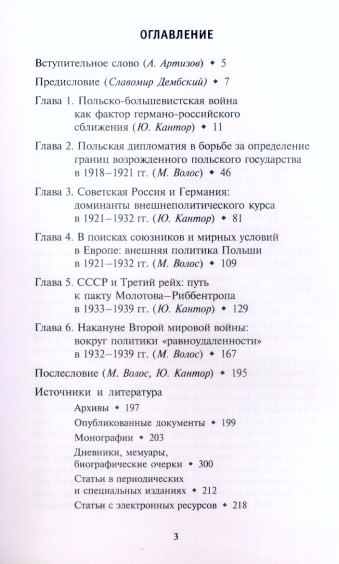Universitätsbibliothek
Hidden rituals and public performances : traditions and belonging among the post-Soviet Khanty, Komi and Udmurts
Acknowledgements . . 9
Abbreviations . . 13
I REPRESENTATIONS OF THE RUSSIAN FINNO-UGRIANS
1. Societies in transition . . 17
2. Traditions in a globalised world . . 19
Are traditions dying? . . 19
Tradition as a concept of introspective Western sociology . . 21
Locality, globalisation and identity-formation . . 22
Co-existence of divergent traditions . . 24
3. Belonging and neo-traditionalism . . 27
Ethnic self-awareness . . 27
The state, intellectuals and the construction of heritage . . 29
Finno-Ugric ethnicities in the making . . 31
4. Interest in Finno-Ugric peoples . . 34
Language, myths and folklore as "evidence of history" . . 34
The expeditions of Finns and Hungarians to their linguistic relatives in Russia . . 36
The aims of the Russian Academy of Sciences . . 39
The basic model of ethnographic field work in the eighteenth and nineteenth centuries . . 40
Field work after the collapse of the Soviet Union . . 42
From moments to understanding . . 43
Between cultures: dialogues, monologues and silences . . 46
II THE KHANTY: PRESERVING AND PERFORMING RELIGIOUS TRADITIONS
5. The land of the white crane . . 51
Behind the Urals . . 51
Worlds flowing into each other . . 52
Experience of locality: rivers and settlements like layers of an onion . . 54
The cross-draught in interethnic relations . . 57
Division of space and practices of avoidance . . 60
Gender: together but apart . . 65
6. Dual organisation, totemic ancestors and kin groups . . 68
Moś- and Por-people . . 68
The animal protector . . 73
L'aksas, reincarnation of a person . . 75
The kinship system . . 76
7. Discussions about myths and tales . . 78
Myths written in the heavens . . 78
Myths of Uralic hunting cultures . . 85
Mythic corpus . . 88
Myths of individuals and small communities . . 91
8. Living with spirits . . 112
Religious worlds of the Northern Khanty . . 112
The cosmos . . 115
The hierarchy of spirits . . 117
Guardian spirits of home and family . . 123
Feeding the spirits at home . . 129
Why worship spirits? . . 132
9. Holy groves and common rituals . . 134
The landscape of the spirits . . 134
Men's and women's holy groves . . 140
Offerings in holy groves . . 144
Common rites, different meanings . . 152
10. Paths of souls, villages of the dead . . 153
Concepts of souls . . 154
Burial rituals . . 156
Remembrance rituals in graveyards . . 167
The passages of souls and continuation of family . . 174
11. The reawakening of shamanic rituals . . 176
Did the Khanty have shamans? . . 176
The concept of shamanism . . 177
Shamans in Khanty society . . 179
The shamanic seance . . 181
Shamans are performing publicly again . . 185
Different interpretations: belief and entertainment . . 191
12. Religion, kin and environment . . 193
Hallmarks of Khanty religion . . 193
Unity of religion, kin and nature . .195
Religion and belonging . . 196
III THE KOMI: PROLIFERATING SINGING TRADITIONS
13. The singing culture of the Upper Vychegda Komi . . 201
Studying Komi singing . . 201
Did the Komi have a singing culture? . . 203
The Upper Vychegda Komi . . 206
Hunting artels as folklore arenas . . 208
Gender relations and songs . . 211
The fusion of singing traditions . . 217
14. Folklore, cultural institutions and festivals . . 218
Folklore as verbal peasant art . . 218
Drama circles and the growth of poetry . . 220
Strengthening the village culture . . 221
The Upper Vychegda collectives . . 222
A life as a cultural director . . 227
Women leaders . . 230
15. "Singing for myself and for my soul" . . 231
At Anna Ivanovna's . . 231
Polyphonic singing . . 232
Transmitting traditions . . 234
Performing traditions . . 235
Dressing up for performance . . 236
Being together . . 238
From politics to women's culture . . 242
16. Folk-editing and variation in songs . . 247
Programmes of folklore groups . . 247
Textualisation and variation of songs . . 250
Old Komi folk texts . . 253
Macaronic and Russian songs . . 266
Songs translated into Komi . . 268
Songs to the words of Komi poets . . 274
Folk variants of the poems of known writers . . 276
Creating the programme . . 282
17. A state project leads to multiple forms of tradition . . 285
IV COMPARISONS AND OBSERVATIONS
18. An Udmurt case: from sacrificial rituals to national festivals . . 291
Holy groves and social order . . 293
Visible and hidden: the battle of ideologies and religions . . 297
From secret ritual into national festival . . 300
Female agency and marked diversities . . 303
The role of intellectuals and the media . . 307
Construction of tradition and cultural identity . . 309
19. Traditions symbolising cultural distinction . . 311
Myths and rituals as political practice . . 311
The revival of nature religion . . 314
Reconstructing sacred histories . . 317
Performing ethnicity in festivals . . 317
Political and economic implications of neo-traditionalism . . 319
20. Dynamics of tradition among the Khanty, Komi and Udmurts . . 320
Bibliography . . 323
Khanty words . . 341
Transliteration of Komi . . 349
Index . . 351
Maps . . 362
Rhetorics of Nordic democracy
ACKNOWLEDGEMENTS . . 7
INTRODUCTION: 'NORDIC DEMOCRACY' IN A WORLD OF TENSIONS . . 9
'NORDIC DEMOCRACY' IN 1935 - On the Finnish and Swedish Rhetoric of Democracy . . 37
WHY 'NORDIC DEMOCRACY"? - The Scandinavian Value Nihilists and the Crisis of Democracy . . 83
SHARING VALUES AND SHAPING VALUES - Sweden, 'Nordic Democracy' and the American Crisis of Democracy . . 114
KEEPING UP THE MORALE - Constructions of 'Nordic Democracy' during World War II . . 141
REFORMISM AND 'NORDIC DEMOCRACY' - A Journey in Danish Political Thought . . 165
SCANDINAVIANS, NORDIC CO-OPERATION, AND 'NORDIC DEMOCRACY' . . 179
VISITING NORDIC MODERNITY AROUND 1900 - Spanish Images . . 194
THE LANGUAGE OF DEMOCRACY IN EIGHTEENTH-CENTURY REFORMIST THOUGHT . . 208
FROM AGRARIAN REPUBLICANISM TO THE POLITICS OF NEUTRALITY - Urho Kekkonen and "Nordic Democracy' in Finnish Cold-War Politics . . 238
PARLIAMENTARIAN DEMOCRACY GOING GLOBAL - The Fading Nordic Model . . 262
CONTRIBUTORS . . 290
INDEX . . 292
Planning a new standard language : Finnic minority languages meet the new millenium
FOREWORD . . 7
INTRODUCTION - REVITAL1SATION OF THE FINNIC MINORITY LANGUAGES . . 8
THE PLANNING OF THE NEW STANDARD LANGUAGES . . 27
THE RELATIONSHIP BETWEEN VARIATION AND STANDARDISATION IN THE CREATION OF A NEW STANDARD LANGUAGE . . 54
MODERNISATION AND SMALL LANGUAGES - FATAL LANGUAGE SOCIOLOGICAL DELAY? . . 74
WILL LANGUAGE NESTS CHANGE THE DIRECTION OF LANGUAGE SHIFTS? ON THE LANGUAGE NESTS OF INARI SAAMIS AND KARELIANS . . 95
PERSPECTIVES ON THE ATTITUDES OF MINORITY LANGUAGE SPEAKERS IN THE SWEDISH TORNE VALLEY AND VIENA KARELIA . . 119
WHILE THE WINGS GROW - FINNIC MINORITIES WRITING THEIR EXISTENCE ONTO THE WORLD MAP . . 147
SUBSTANCE THROUGH YOUR OWN LANGUAGE - THE MINORITY MEDIA CONNECT, STRENGTHEN AND INFORM . . 178
CONTRIBUTORS . . 203
INDEX . . 204
The Helsinki University Library - The National Library of Finland, 1640-2010
Bibliotheca academica in Turku 1640-1828 . . 7
Aboa literata . . 9
The Academy librarians . . 15
Porthan - cultural hero in eighteenth-century Finland . . 17
The fire ot Turku in 1827 . . 19
The Library of the Imperial Alexander University 1828-1905 . . 23
Finnish national literature . . 25
Under His Majesty the Emperor's special protection . . 29
The restorer of the Library: F. W. Pipping . . 33
New library methods: Karl Collan . . 33
The philosopher: Wilhelm Bolin . . 36
The Temple of Science - the buildings in Helsinki . . 38
The Reading Room and the Rotunda . . 41
The Helsinki University Library 1905-1980 . . 44
A national research library . . 45
The Library in two World Wars . . 51
Rebuilding between East and West . . 55
Bibliotheca renovata: from the 1950s to the 1970s . . 60
In the mass university: the Open Access Collection . . 62
The National Library and the Finnish library network 1980-2010 . . 65
Services for the country's library network . . 69
Innovations: Linnea and FinELib . . 70
The National Digital Library . . 72
Recessionary pressures . . 74
Facing the twenty-first century . . 77
Content provider and memory organisation . . 79
New services and new collections . . 81
The cultural environment: exhibitions and campaigns . . 85
Future options . . 87
Balancing the books . . 88
A survey of the collections and their history . . 91
The Slavonic Library- the Russian cultural heritage in Finland . . 91
The Adolf Erik Nordenskiold Library . . 100
The Monrepos Library . . 102
The collections of the National Library of Finland . . 107
Appendix . . 116
Information and further reading . . at end of volume
Perestroika : process and consequences
Foreword . . 9
Introduction: The Anatomy of Perestroika . . 11
PART I: IN THE MAKING PERESTROIKA
Perestroika in Retrospective: Historical Consciousness and Responsibility . . 37
The Main Concepts and Actors of Perestroika . . 59
Perestroika and Changed Reporting of Social Problems in Newspapers . . 76
Elite and Perestroika before Perestroika in Hungary . . 97
Perestroika and the Reform Agenda for the Council for Mutual Economic Assistance - New Direction or Dead End? . . 120
Soviet Philosophy and Perestroika - Undoing the Community of Discourse? . . 146
PART II: PERESTROIKA AS A PROCESS
Making Social Discussions Possible: Perestroika and the Development of the Public Sphere . . 171
Soviet Women in the Second World War . . 191
The Politicization of Aleksandr Solzhenitsyn in the Soviet Union, 1987-1992 . . 205
The Club in Support of Glasnost and Perestroika in Bulgaria: A Swing-wing Phenomenon . . 222
PART III: AFTER PERESTROIKA
Ethnic Jokes in Russia - A Form of Everyday Racism? . . 247
Reading Perestroika-Era Tension into the Activity of the Pro-Putin Youth Movements . . 262
Russian Death of the Author: More or Less a Poet . . 284
Towards a Fast-Food Reality: The 1990s and the Transformations in Polish Literature . . 312
Women's Strategies for Entrepreneurship and Survival in Russia's Regions . . 330
Bibliography . . 351
Contributors . . 377
Anatomiâ konfliktov : Centralnaâ i Ûgo-Vostočnaâ Evropa: dokumenty i materialy poslednej treti XX veka. T. 1, Načalo 1970-h - pervaâ polovina 1980-h godov
Verlag
Vospriâtie Rossii i russkoj literatury pol'skimi pisatel'âmi : (očerki)
Verlag
Soznanie i tvorčeskij akt
Verlag
Numizmatický katalóg československýcha slovensých mincí 1918- 2014
Verlag
Treugol'nik : Moskva - Varšava - Berlin : očerki istorii sovetsko-pol'sko-germanskih otnošenij v 1918-1939 gg.
Verlag

